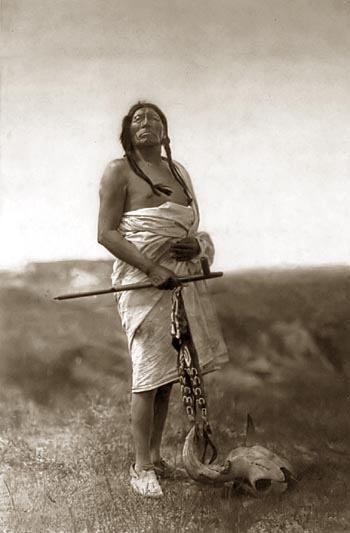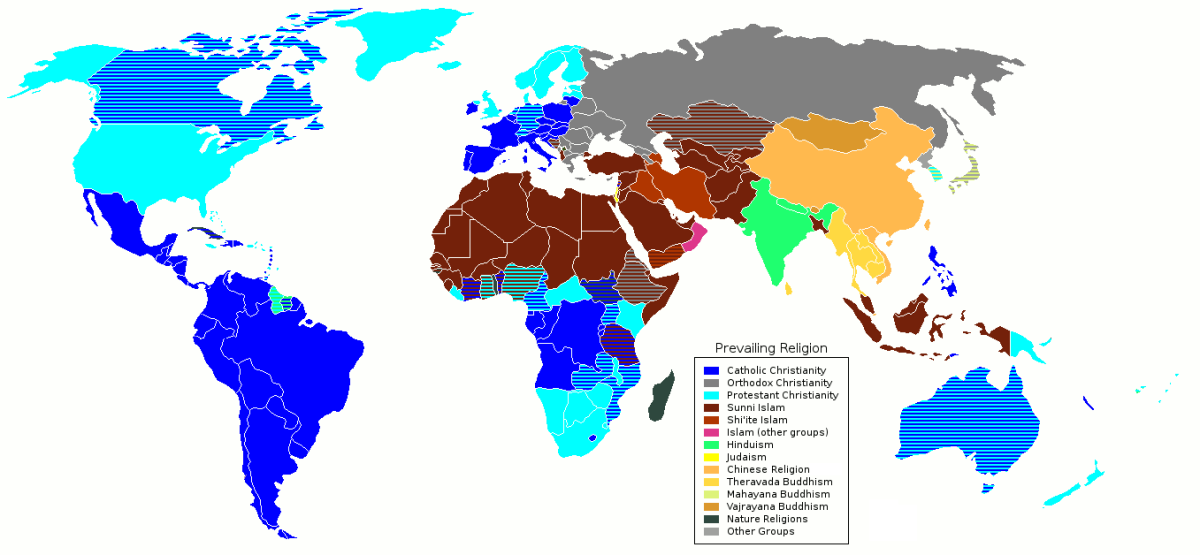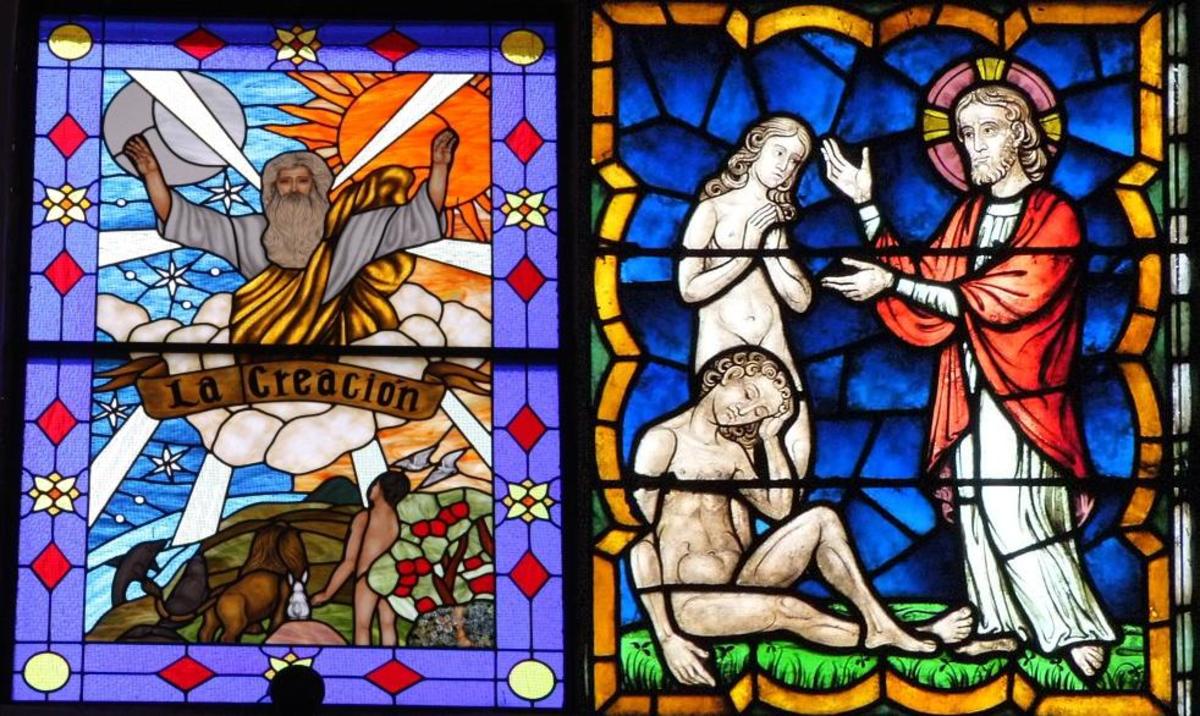God is Red

![Medicine Man [Blackfoot/Siksika] - George Catlin Painting 1830s Medicine Man [Blackfoot/Siksika] - George Catlin Painting 1830s](https://usercontent2.hubstatic.com/149833_50.jpg)
God is Red by Vine Deloria, Jr. 1972, 1992.
Vine Delores, Jr. write the first edition of his book God is Red in 1972. The author is a very well known scholar and activist in Native American and First Nations matters. In fact, he ahs placed himself at the forefront of raising awareness of the injustices done toward Native Americans since before this nation was founded. His later version of God is Red amasses his experiences since 1972 into the mix.
Deloria's introduction to his own text includes the statement:
"At the bottom of everything, I believed then and continue to believe, is a religious view of the world that seeks to locate our species within the fabric of life that constitutes the natural world, the land and all its various forms of life."
This is s simple restating of the philosophies of sociology and cultural anthropology that point to societal institutions existing in order to bind people into a societal group along with their and their cultures and subcultures. Religion is one of those "ties that bind", along with government, education systems, and sports as a whole and several others. It all makes sense.
The author writes throughout three chapters with passion about the Indian Movement, Caucasian-built stereotypes of Indians. He provides a cynical description of Christian churches and their workers in the Civil Rights Movement and its radical activities of the 1960s - 70s.
Chapter 4, "Thinking in Time and Space," begins what is an intelligent and clear discussion of the significant and fundamental differences between the Native religious experience and that of the European settlers.
Creation Stories/Foundation Stories
Christians and other major monotheistic religious groups such as the Jews and Muslims believe that the creation legends are true, historical events. These "myths" as anthropology calls them all have a beginning, some sort of single day of Creation, and similar event. They all predict an unavoidable ending to the world in which earth will be destroyed or transfigured into the Kingdom of God and Heaven. Creation in all of these foundations comes "out of nothingness" - a miracle.
Modern Christianity became concrete and materialistic (recall the trappings and wealth of some Catholic Cathedrals, for example). Native America religious belief systems had none of that, nor do they today in the 21st century. Aboriginal religions are oriented toward space and time (notably the Dream Time of the Australian aborigine). History is a more loosely defined concept (many moons), and comprises historic events (often form oral traditions), legends, teaching stories (many nations have official storytellers), and all sorts of myths. They are all part of the cultural reality.
Many origin stories describe mankind coming to earth form another place. Deloria adds the Christian notion of nature having fallen from grace along with the original sinner Adam. Mankind was redeemed though Jesus Christ, but nature was not. Therefore, nature must be corrupt in this world-view. Jewish/Christian mankind was given dominion over earth and all creation; but Native American Peoples are a part of it all on the same level as all living matter - hence one Native motto "All my relations." Deloria blames Christianity in the organized church for environmental destruction on earth, whereas Native Americans are part of it and work to preserve it.

Power Animals/Totem Poles
- A Totem Pole Is a Person: Master Carvers, Indigenous...
Carved cedar poles have often been misunderstood and misrepresented. - Totem Poles in the Pacific Northwest, Vancouver BC, ...
The history of totem poles around the Pacific Rim and the Sub-Polar regions is many centuries old.
Belief Systems
Belief systems reflect the people among which they originated. For example, "Middle Eastern" religions are more authoritarian, hierarchical, and historical, because these characteristics fit the cultures. On the other hand, Native religions are more spatial, individual, and experiential - for example, thin of the Vision Quest in many tribal religions, including North America. In fact, the legend of Star Trek's Spock and his journey through the desert of Vulcan as a youth imply the same type of quest. It is threaded throughout mankind's experience, even in its space operas.
There are some instances where Native notions of sacred space has tremendous impact on the basic tenets of American democracy. Perhaps the most widely cited instance of this is the case of Lyng v. Northwest Indian Cemetery Protective Association: the National Forest Service proposed 6 miles of paved roads to open a forest for logging; right through ceremonial and religious sacred space of three Native American Nations. The Court decision implied that recognizing Native rights would imply that the Indians owned federal lands, when they themselves did not believe so. To them, no one can own the land. As a scientist said in the 1960s, "On planet earth there are no passengers. We are all crew."
Native American Links
- Native American Nations - Introduction
Links to Native Americans and First Nations throughout the Western Hemisphere. - Native Americans in Western Novels
- National Pow Wow of the United States
Religion Today
The author concludes his text with the chapter title "Religion Today,"
Deloria writes about the differences in religious ceremonial approaches, specifically Indian healing ceremonies; He points out that Christian healers depend on intense emotional experience and strongly applied willpower in the victim of ill health to accept God's healing intervention.
On the other hand, Native Americans use prescriptive ceremonies - Their healers preserve a portfolio of specific ceremonies for particular illnesses. Many healers are actually specialists in healing certain diseases. They have and exercise special gifts that they received according to their specific religious experiences. It is just as it is in a Christian church, however, where one that has been healed of cancer seems gifted in praying for others that are suffering the same disease. These Native American healers would seem to have received a specific anointing, then, to heal specific conditions. The Christian church speaks of this same sort of anointing in the gift of healing. However, Deloria believes that the healing procedure depends on emotional display. To onlookers, Native American healing ceremonies also appear emotional, so Deloria may have contradicted himself without intent.
Deloria states that the differences between Christianity and indigenous peoples' religions are that the Native belief systems are more concerned with basic living, such as gaining a livelihood from the land, participating in the community; and accepting shamans and medicine men with special powers and gifts in the community as mainstream. In contrast, Christian religious healers are often seen as crazy (or frauds).
Some individuals are afraid of both and therein lies a similarity.
Some say the historical Jesus was a lot more Native than we think:
- He was tribal (Israeli - 12 tribes).
- He was a story teller (parables)
- He lived close nature (nowhere to lay his head)
- He understood fishing and harvesting.
- He was from an oppressed people group (Pharaoh tried to kill him as a first born baby and He is Jewish by ethnicity).



![Medicine Man [Blackfoot/Siksika] - George Catlin Painting 1830s Medicine Man [Blackfoot/Siksika] - George Catlin Painting 1830s](https://usercontent2.hubstatic.com/149833.jpg)








